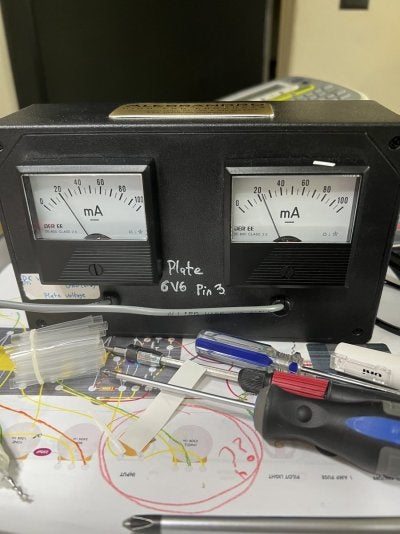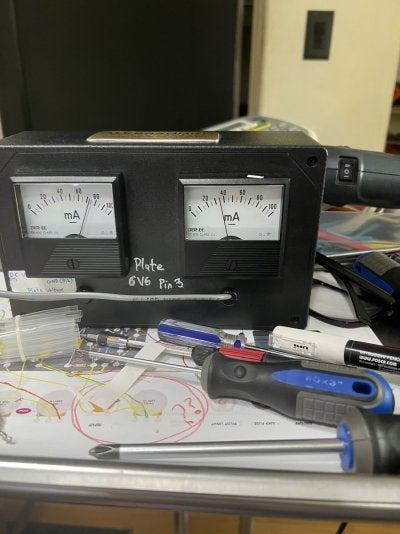bel Sonique Guitars
TDPRI Member
Hi, I’m new here, 6G3 build
I’m getting a spike of 80ma on valve 4 6v6, when amp is almost dimmed on an open E chord. I can’t audibly hear anything just see it on my meter (see attached pics) valve 5 seems to be where it should. Also note GZ34 420-430V at the plate
Amps biased around 20-21ma
Swapped tubes as well
SPECS: Mojo Tone layout/schematic *added* bias pot, screen and grid resistor 470/1500
PT Hammond 290BX 355V
OT Hammond 1760H 20W
Thoughts?
Thanks all!
I’m getting a spike of 80ma on valve 4 6v6, when amp is almost dimmed on an open E chord. I can’t audibly hear anything just see it on my meter (see attached pics) valve 5 seems to be where it should. Also note GZ34 420-430V at the plate
Amps biased around 20-21ma
Swapped tubes as well
SPECS: Mojo Tone layout/schematic *added* bias pot, screen and grid resistor 470/1500
PT Hammond 290BX 355V
OT Hammond 1760H 20W
Thoughts?
Thanks all!


